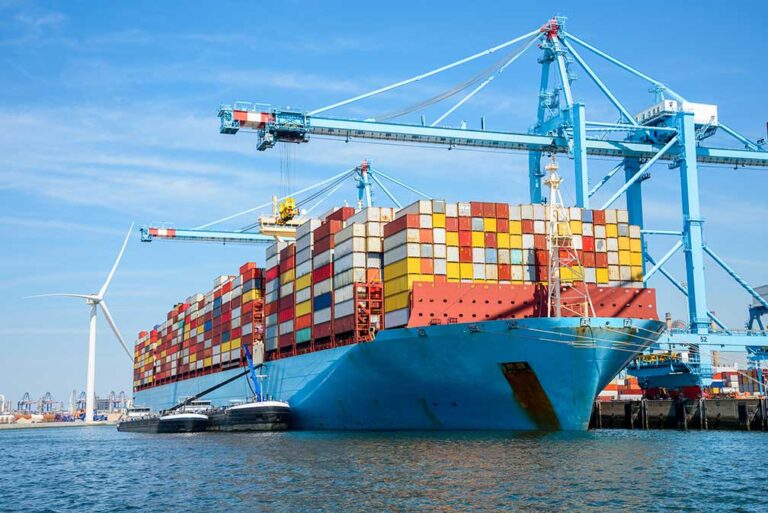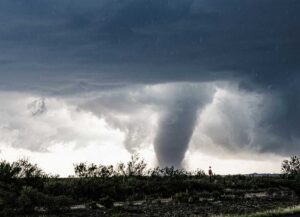Malcom McLean (1913-2001) despised inefficiency. So determined was he to streamline his life and business that he dropped the superfluous letter “l” from “Malcolm” to make his name a little shorter to write.
“Who on earth is Malcom McLean and why do we care?” you might ask. Bear with me as I share my tale, and you’ll soon understand the role he played in innovating the freight industry.
A penchant for saving time and money
Even as a youngster, McLeandemonstrated a zeal for making money, selling eggs from the family farm at a roadside stand in North Carolina. After graduating from high school, he didn’t bother with college (perhaps he found the process of getting an education too cumbersome). Instead, he went to work as a stockboy in a grocery store.
In 1931, McLean took his hard-earned money and bought a gas station. While working in the gasoline business, he found a way to save $5 — a substantial sum in those days — on each delivery of gas used to fill his tanks, and he immediately implemented it.
Three years later, he decided to expand his business and bought a single delivery truck, which he drove. That truck was the first of many in what became one of the Southeast’s largest truck lines — McLean Trucking — which hauled textiles and cigarettes along the East Coast.
And McLean continued to look for ways to save money.
At one point he redesigned his trailers to increase their aerodynamics, saving a few cents on every tank of gas his trucks burned. Over the next decade, those few cents began to add up.
When traffic congestion in the U.S. increased in the early 1950s, McLean set out to find a way for his business to operate efficiently. The interstate system was still years away, and McClean knew he couldn’t control any of the traffic on the highways other than his trucks.
And those trucks, all too often, were stuck in traffic.
McLean’s solution was to reduce his reliance on highway transport — he’d move his cargo by sea instead.
However, he discovered, this wasn’t as simple as it sounded. The process of shipping by vessel had been essentially unchanged for centuries. Products were delivered to the docks in containers of all types, shapes and sizes. Each container was loaded individually onto a ship, which carried tens of thousands of containers ranging from bags to boxes.
Once a ship reached its destination, all those tens of thousands of containers had to be offloaded and set out on the dock. From there, they were reloaded onto trains, trucks or wagons and sent to their final destinations.
During this process, each and every container had to be picked up and moved at least five times before. McLean determined that the cost at each point of handling was nearly $6 per ton. He knew a more efficient method of shipping could be developed.
So, he came up with an idea that revolutionized the shipping business.
If his trucks could simply drop a fully loaded trailer on the dock to be transferred in its entirety to a ship, McLean surmised, he could save time and money picking the trailers up at ports to be hauled by truck. He could ship several trailers at once, and his idea would minimize highway time between the point his trucks loaded with cargo reached their destinations.
Unfortunately, McLean’s, his idea was filled with inefficiencies of its own. First, trailers took up far too much space on an oceangoing vessel, reducing the amount of cargo the ship could transport.
The birth of the shipping container
McLean addressed this problem by designing shipping containers that could be separated from the trailer chassis. Not only did this innovation eliminate the need for the entire trailer to be shipped, but it allowed the containers to be stacked, greatly increasing the amount of cargo a ship could transport.
But there was yet another problem: The shipping industry wasn’t equipped to unload such heavy containers. Cranes had to be built and installed at the docks, and the docks had to be retrofitted to compensate for the space taken up by the new cranes.
Furthermore, the longshoremen who had long worked the docks vehemently opposed the idea of containerization. After all, the new method decreased the need for manual labor. Unions fought against McLean’s idea, at least until regulators assured them that workers’ wages would not be cut as a result of the innovation.
With McLean’s method reducing handling costs to only eighteen cents per ton, the longshoremen’s fears were warranted — but other jobs became available that were far less strenuous and dangerous than the ones longshoremen had performed for centuries.
In 1955, McLean sold off his trucking business and invested in a fledgling shipping line, which he renamed “Sea Land Service.” Soon, McLean’s ships carried his specially designed cargo containers all along the East Coast, eventually using the Panama Canal to serve the West Coast and Alaska as well. In 1964, when an earthquake in Alaska created a desperate need for building materials, only Malcom McLean’s shipping business could reach the state with the necessary speed.
Before long, other shippers wanted in on McLean’s innovation. They designed similar containers, but Mclean held the patent on his own, so no universal design was available to serve every ship.
The inefficiency of having numerous container designs disturbed McLean — and the military was particularly interested in standardizing shipping in order to supply troops in Vietnam. So, McLean released his patent.
Soon all shipping containers were of the same design; they could be easily stacked and could be mounted on any trailer chassis. McLean’s Sea Land Service became the standard for international shipping.
So, the next time you see one of those now-familiar pod-like containers traveling down the highway or being hauled by rail — or you position your rig beneath a crane at a sea port and see the endless stacks of neatly stacked containers on board the ships entering and leaving port — you can thank McLean’s unyielding passion for efficiency.
McLean’s innovations in intermodal transportation earned him the title, “The Father of Containerization.” For the young egg salesman from North Carolina, the high seas were likely only a dream. But his invention goes down as one of the most important in shipping history.
Since retiring from a career as an outdoor recreation professional from the State of Arkansas, Kris Rutherford has worked as a freelance writer and, with his wife, owns and publishes a small Northeast Texas newspaper, The Roxton Progress. Kris has worked as a ghostwriter and editor and has authored seven books of his own. He became interested in the trucking industry as a child in the 1970s when his family traveled the interstates twice a year between their home in Maine and their native Texas. He has been a classic country music enthusiast since the age of nine when he developed a special interest in trucking songs.









Malcolm McLean was revered inside Mclean Trucking for many years after he sold McLean to buy and launch Sea-land Services. In 1971, McLean’s reality company, Diamondhead Corporation purchased Pinehurst and was instrumental in Pinehurt’s further development and success. There were very nice tributes to McLean and Diamondhead inside Pinehurst’s main property.
Lastly, in 1978 McLean purchased U.S. Lines and built a fleet of 4400 TEU container ships, the largest afloat at the time. The ships were fuel efficient but slow and 1986 US Lines filed for Chap 11 bankruptcy. McLean went on to found other companies and died in 2001 at 87. He truly revolutionized the maritime industry. In 1976 I started my career at MLNT, “Double Diamond” and had a long career in trucking and logistics. Hello to any old MLNT friends that may review the article. Thanks for this historical note on Malcolm McLean.
An American all the way.
An outstanding and inspirational story.
Thanks Kris Rutherford
YES!